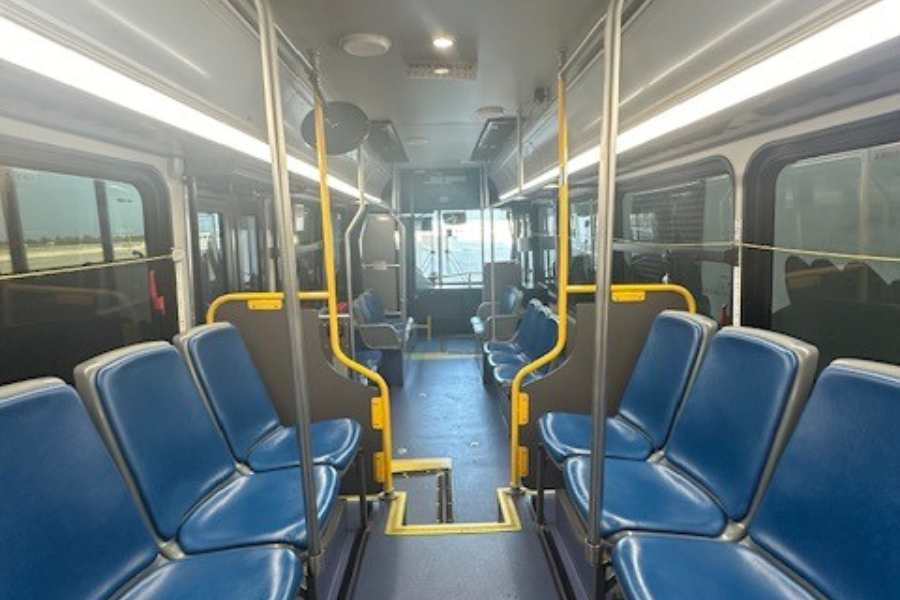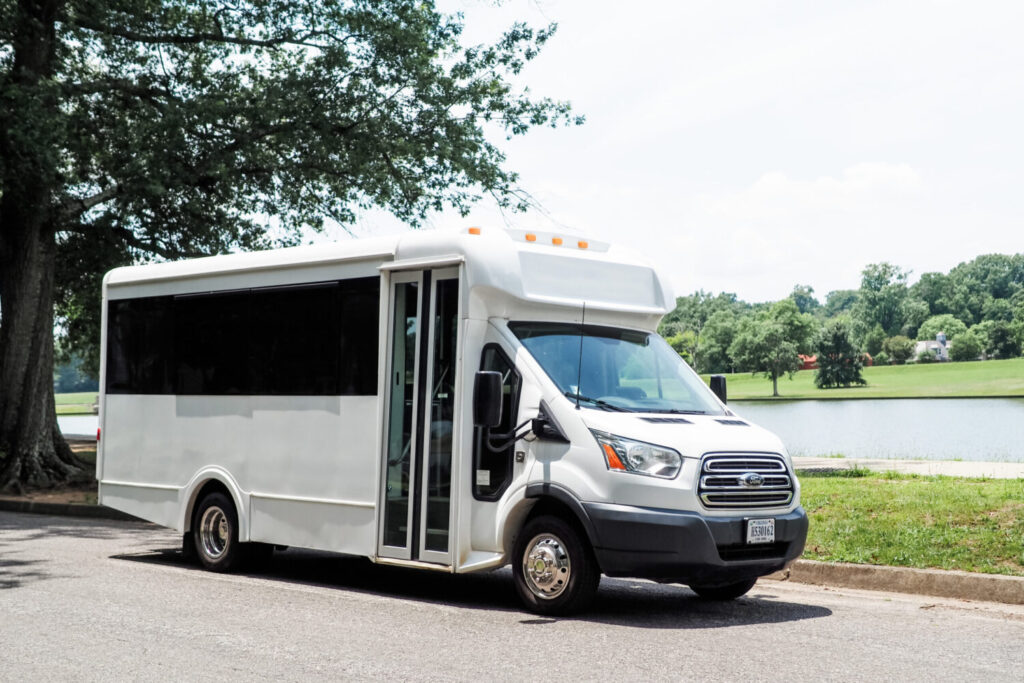20 Free Ideas For Choosing Event Transportation Websites
20 Free Ideas For Choosing Event Transportation Websites
Blog Article
Employee Shuttle Transport 10 Tips To Choose The Best Vehicle And Capacity
Here are 10 top strategies for choosing the appropriate size vehicle and its capacity to transport employees:
1. Examine the needs of employees for transportation
In the beginning, conduct a thorough analysis of your employees to determine how many of them use the shuttle regularly. Take into consideration factors like the amount of employees, their schedules of work, and high-traffic hours. These information can help you figure out the car's capacity, and also ensure that the shuttles can accommodate a variety of passengers numbers.
2. Select the right type of vehicle
Choose the best vehicles to serve your shuttle needs depending on the amount of staff employed and particular requirements. There are minibuses available, along with vans and larger buses. Minibuses are a good option for small groups, and they are able to navigate tighter spaces. The larger buses are ideal for larger groups. Consider the vehicle's layout and whether it has enough seating space and comfortable seating for luggage if employees travel with bags or other equipment.
3. Evaluate Fuel Efficiency
Fuel costs have a major impact on the budget of shuttle services. Prioritise vehicles with low consumption of fuel to cut costs. Electric or hybrid cars are also worth considering, since they can provide the long-term benefits while also achieving the sustainability objectives. By comparing the efficiency of fuel of various vehicles it is possible to make an informed choice that balances both capacity and cost-effectiveness.
4. Be aware of accessibility features
Check that the vehicles chosen for use by employees with disabilities are accessible to requirements. This can include features like the ability to lift wheelchairs, low floors to make it easy for wheelchair users, and seating areas for people who have mobility issues. This not only meets the legal requirements but also creates a comfortable working environment.
5. Plan for Growth, with Flexibility
As companies grow, workforce sizes may change. If you are selecting vehicles, you should consider the potential for future growth. The flexibility of cars with adjustable seating arrangements or the ability to expand their capacity allows companies to easily adjust to shifts in the number of employees.
6. Check out safety ratings and features
When you think about employee transportation security is of the utmost importance. When choosing a vehicle make sure you check the safety rating and features. Look for vehicles equipped with advanced safety technologies, such as anti-lock brakes, stability control, and collision avoidance systems. Check that the vehicle complies with all federal and local regulations to ensure the safety of your employees.
7. Review reliability and maintenance
Select cars that are well-known for their low-maintenance costs and dependability. If your vehicle is constantly in need of repairs can lead to shuttle disruptions and unhappy employees. You can also establish a maintenance plan to maintain vehicles in optimal conditions and extend their lifespan.
8. GPS as well as Fleet Management Software
The implementation of GPS tracking software and fleet management will enhance efficiency of shuttle service. These software tools permit real-time monitoring of the location of vehicles and optimise routes in accordance with traffic conditions, employee schedules and other schedules. In addition, the software for managing fleets permits you to track the performance of your vehicle, its maintenance, and fuel usage. This will ensure that the vehicles are being used effectively.
9. Employ feedback mechanisms for employees
Encourage employees to provide opinions via surveys or a suggestion box regarding the vehicle's comfort and capacity. Understanding the employees' experiences can help you spot any problems with seating comfort or accessibility. Monitoring this feedback frequently will allow for required adjustments to car selection as well as service adjustments.
10. Total cost of ownership The budgeting process for the total cost
The total cost of ownership, also known as TCO, includes the purchase price as well as maintenance and insurance costs and depreciation. TCO analysis aids in making educated decisions that balance the an initial investment with the long-term operation costs. You can make informed choices by weighing the various costs that are involved. This will allow you to pick a vehicle that will meet your budgetary needs while also providing capacity and reliability.
Use these guidelines to ensure that your organization can choose the correct vehicle and control the number of employee shuttles. See the top my website for more examples including transport to the airport, lax airport shuttle service, shuttle service near me, dallas airport shuttle to hotels, pickup from lax, service shuttle, transportation to lax, los angeles airport transportation, pick up service airport, ground transportation from miami airport and more.
Top 10 Tips On How To Budget And Estimate The Cost Of A Corporate Transportation Service
Here are some of the best ideas on cost and cost factors in a company's transportation service.
1. Conduct a Comprehensive Cost Analysis
Begin by conducting an analysis of costs to determine the total cost of your transportation service. This includes vehicle leasing or rental costs, fuel costs and driver's salaries and insurance, maintenance and any additional fees related to parking permits or permits. Knowing the total cost will help establish an achievable budget.
2. Budget Framework
Create a budget for your organization to demonstrate how much it is willing to spend on transportation. This framework should consider the total cost of transportation and be flexible enough to handle any unexpected costs. Establishing a budget helps guide the process of making decisions and ensures that transportation costs are able to be managed.
3. Consider Alternative Transportation Options
Think about the various transportation choices to attend your event. This could include shuttles, vans or ride-sharing service. Analyze the costs for each option while weighing factors like comfort and convenience. The budget for transport can be boosted by selecting the most cost-effective option that meets the requirements of attendees.
4. Make Contracts Negotiable with Transportation Providers
Talk to your preferred transportation company to get the best rates. Many transportation companies will offer discounts to corporate events or bulk bookings. Good relationships with service providers can lead you to receive better rates and better services that will eventually help your budget.
5. Plan ahead for fuel costs
Include fuel costs into your budget because they can affect transportation costs in a significant way. The distance from the location and the anticipated number of trips are crucial. To reduce costs consider negotiating with the transport company who uses for vehicles that are fuel efficient.
6. Include Contingency Funds
Set aside a part of the budget for contingency money to cover unexpected costs. Transport can be unpredictable due to issues like vehicle malfunctions or additional trips. A contingency fund will ensure that you are prepared for these scenarios without going over budget or compromising the quality of service.
7. Packages and discounts for groups are available
Take a look at the packages or group rates that are provided by your transportation provider. Many transportation companies offer discounts for large corporate events or groups. These can be an enormous savings. For discounted packages, ask about additional services, such as on-site coordination, as well as extra vehicles.
8. Monitor and track expenses
Maintain a close watch on all transportation-related expenses throughout the planning and execution phases. Monitor costs using spreadsheets or budgeting software. Monitoring expenditures can help identify areas for savings and keeps the budget in the right direction.
9. Collect Feedback to Improve Budgeting
After the event is over After the event is over, you must collect feedback about attendees' transport experiences and expenses. Reviewing feedback can help you gain insights into the effectiveness of the transportation service, and informing future budgeting. Understanding what went well and what didn't assist you in planning your budget for future events.
10. Determine the total cost of ownership
Assess the total cost of ownership (TCO), which includes both the purchase or rental cost as well as ongoing expenses like maintenance, insurance, and depreciation. This does not just include the cost of the vehicle, but all ongoing expenses, such as depreciation, insurance and maintenance. Understanding TCO can help you make better choices and help you balance your initial costs with the financial consequences that may come in the future.
These tips will allow you to manage your costs and make budgetary decisions that are informed for the corporate event transportation service. While ensuring transportation needs are fulfilled an organized budget can contribute to the overall success of the event by giving guests the ability to focus on the experience than on the logistics. The image of the company is improved by proper budgeting and the management of costs shows its dedication to efficiency and responsible conduct. View the best https://www.swoopapp.com/solutions/event-transportation-service/ for website examples including transportation specialists, transport job, reliable transportation, safe transportation, coach transportation, transportation management solutions, us transport, reliable transportation, mgt logistics, vehicle transport service and more.